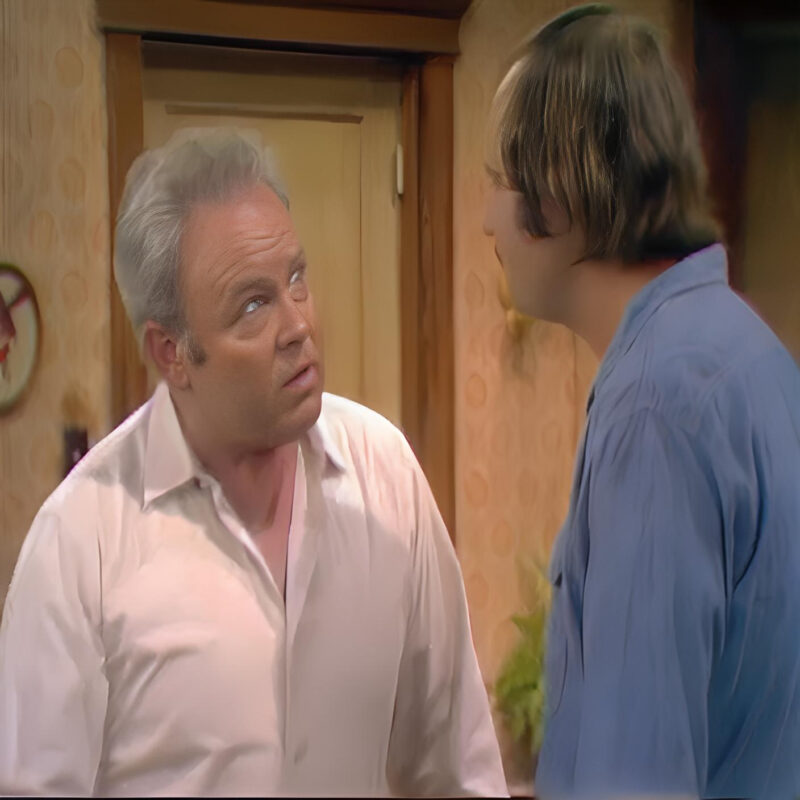
All in the Family routinely protested the fact that the U.S. government effectively forced the show to change its time slot.
It’s difficult to grasp just how different the television landscape was fifty years ago, and how significant the Federal Communications Commission’s (FCC) impact was on television. With only three major national networks in the 1970s, the FCC was constantly concerned about the power ABC, CBS, and NBC wielded.
One example of the FCC’s concern was the Prime Time Access Rule, passed in 1970 and implemented in the 1971-72 TV season. This rule forced the networks to “surrender” a half-hour Monday through Saturday and a full hour on Sundays, giving local affiliates the freedom to program those time slots themselves, ideally for local news. Instead, affiliates often turned to syndication. Eventually, a compromise was reached, allowing networks to regain the 7 pm to 8 pm hour on Sundays for family programming or news, leading CBS to move 60 Minutes to that slot, cementing its status as a cultural institution.
However, another change, the push for the “Family Viewing Hour,” did not work out as well.
What was the Family Viewing Hour?
Heading into the 1970s, there was a strong anti-violence movement targeting children’s programming. Parents’ groups successfully petitioned the government to regulate the industry, reducing the violence depicted in cartoons. Superhero shows, like Super Friends, were significantly toned down, with characters like Superman limited to non-violent actions.
In the early 1970s, similar concerns extended to prime-time television. A significant catalyst was the 1974 made-for-TV movie Born Innocent, which featured a rape scene that drew immense negative attention. In response, FCC chairman Richard E. Wiley convinced networks to dedicate the 8 pm to 9 pm hour to “family-friendly” programming starting in the 1975-76 TV season. The National Association of Broadcasters Television Code was amended to ensure this, affecting local affiliates as well.
This change was bad news for the biggest hit on TV at the time, All in the Family.
The Impact on All in the Family
The iconic sitcom, created by Norman Lear, starred Carroll O’Connor as Archie Bunker, a bigoted working-class man in Queens. The show, which mocked Archie’s ignorance while exposing his intolerant views, was edgy for its time. Initially airing at 9:30 pm on Tuesdays in its first season in 1971, it gained moderate success but skyrocketed to number one after moving to 8 pm on Saturdays in the 1971-72 season. By the time the Family Viewing Hour was implemented, All in the Family was in its fourth consecutive year as the top-rated show. The rule change moved it to 9 pm on Mondays starting in the 1975-76 season.
How Did All in the Family Respond to the Time Slot Change?
The Writers Guild, Directors Guild, and Screen Actors Guild sued the networks over the Family Viewing Hour on First Amendment grounds. Separately, Lear’s Tandem Productions sued over All in the Family being forced out of its time slot. The lawsuits were joined and tried together.
In November 1976, a judge ruled the Family Viewing Hour unconstitutional, primarily because the FCC used behind-the-scenes pressure rather than publicly debated rules to enforce the change. The National Association of Broadcasters’ agreement was also invalidated, deemed to have been made under duress.
Before winning the lawsuit, Lear had the cast create a short film mocking the Family Viewing Hour. Dressed in fancy clothes, they sang a parody of the iconic All in the Family theme song, “Those Were the Days,” titled “These Are the Days,” humorously highlighting how modern television was only bold and progressive after 9 pm.
Sadly, while the rule was dropped in time for the 1977-78 season, All in the Family never returned to its Saturday 8 pm slot. Although it remained the number one show during its first season on Mondays at 9 pm, its ratings declined thereafter. Midway through its ninth and final season, the show moved to Sundays at 8 pm, continuing as Archie Bunker’s Place, which ran for four seasons in the early 1980s.
The Legend Lives On
All in the Family remains a testament to how television can challenge societal norms and push boundaries, leaving an indelible mark on American culture.
